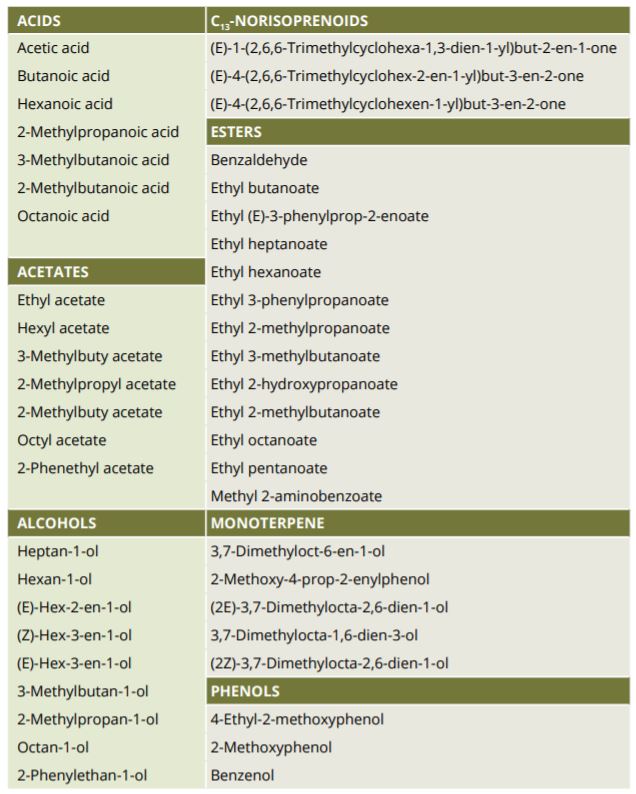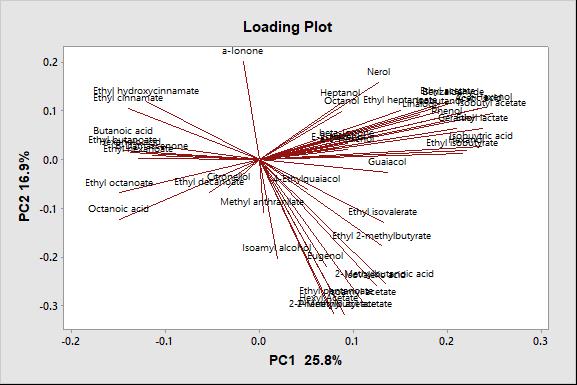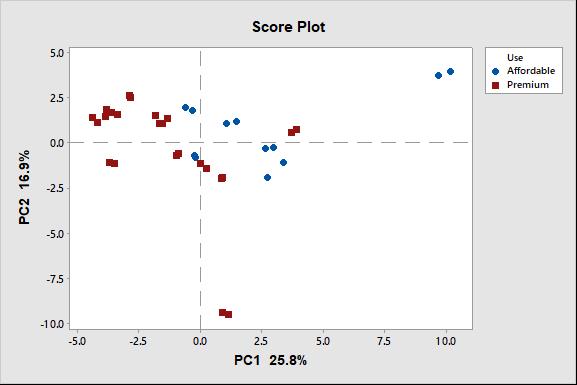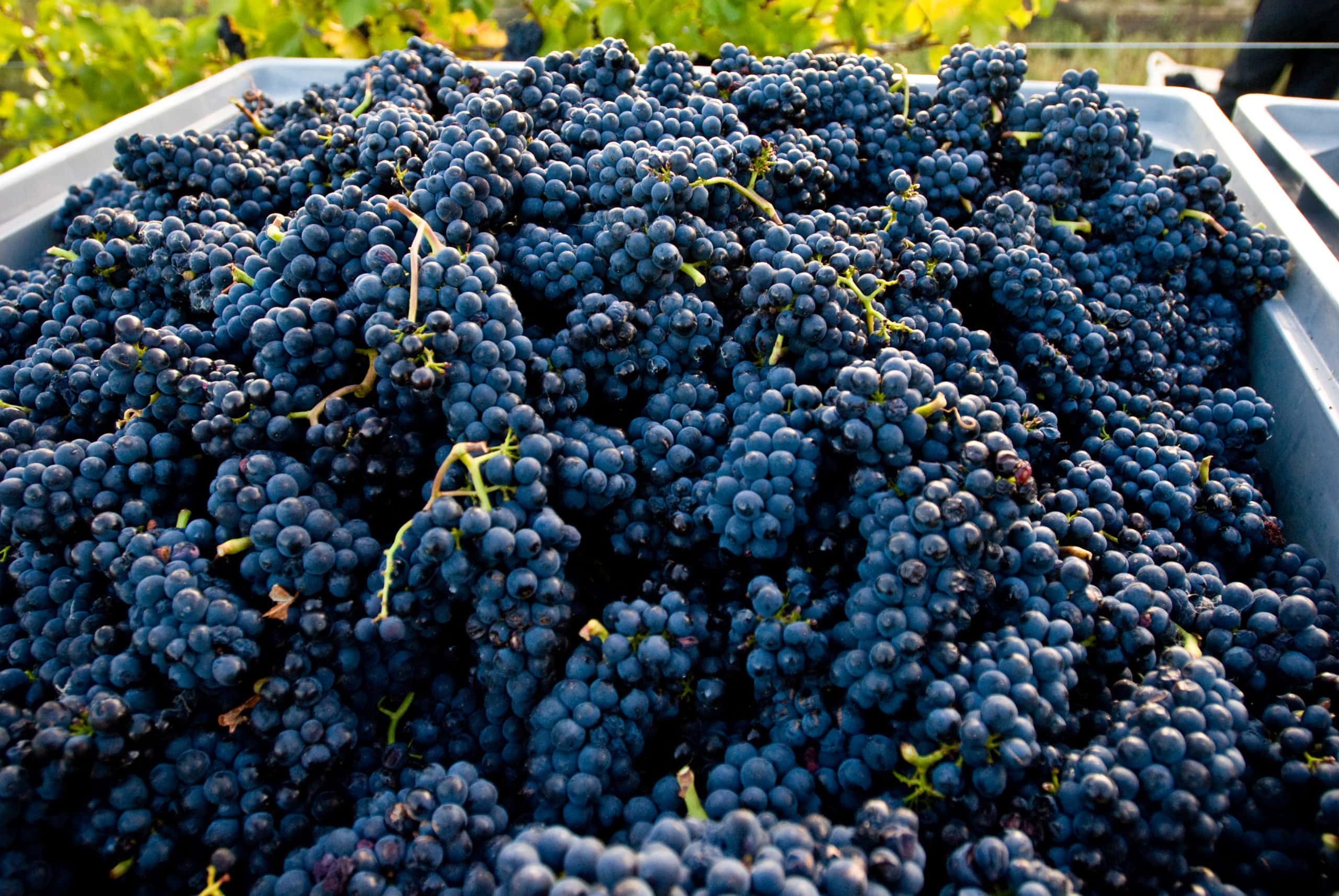Targeted aromatic compound analysis of Pinot Noir
Dr. Kenneth J Olejar and A/Prof. Roland Harrison
Winemakers and judges regularly assess the quality of a wine through its smell. However this is subjective as individuals have different perceptions as to what makes a quality wine for a particular variety. Nevertheless, descriptions of the smell of a wine do provide a basis for defining aspects of quality associated with the composition. Research into these descriptors and the chemical composition of wines has led to linking of specific chemical compounds to specific aromas. Because we can give quantitative values to the chemical constituents of a wine, this provides an opportunity to measure the quality of a wine.
Targeted volatile compound analysis of wine has been advancing ever since the link between chemical compounds in wine to the sensory descriptors was established. A technique that uses a special fibre to collect a sample from the air above the wine (this is what a wine-lover does when they bring a glass to their nose and sniffs) is the gold standard for analysis of these compounds. Analysis using this method can detect these compounds at a fraction of a parts per billion. This sensitivity allows for the thorough investigation of a wines components.
We utilised a targeted approach to analyse eighteen commercially available wines that were classified into two categories, premium (12 wines) and affordable (6 wines). The analysis examined 47 compounds in 6 main chemical groups (Table 1) typically found in Pinot noir wine internationally and within New Zealand.

Table 1. Compounds quantified from the targeted analysis methods.
The large datasets generated by this type of analysis are best interpreted by multidimensional statistical analysis. In this instance we have utilised a technique called Principle Component Analysis (PCA), Figure 1, to determine which compounds explain the differences observed between the affordable and premium wines. Figure 1A illustrates the importance of each aromatic compound in relation to the differences between the wines, and any correlation between the aromatic compounds themselves, whereas Figure 1B allows the visualisation of how the wines are sorted according to their variability.


Figure 1. PCA loading (A) and score (B) plots of aromatic compounds of 18 Pinot noir wines.
As stated earlier, this statistical technique is a way of analysing complex datasets where many parameters are measured, in this case concentrations of 47 different compounds. From a statistical point of view, this means that the data exists in 47 dimensions, but in these diagrams we are looking at only two of the most important dimensions. From Figure 1A and 1B the first two Principal Components only explain 42.7% of the variation: This simply goes to show how difficult it is to pin down differences in wines to only a few parameters. Nevertheless, Figure 1B demonstrates that the first two PCs can begin to differentiate the two categories of wines, as the premium wines are predominantly found to the left of the graph and the affordable wines on the right. We can use Figure 1A to find out which chemical compounds are responsible for this: it seems that a premium wine has concentrations of unbranched aromatic compounds and cinnamic acid derivative esters, while affordable wines have higher concentrations of long-chain alcohols, acetates, and branched aromatic compounds.
So, what does this all really mean? Remember that this is only a snapshot in two dimensions of all the differences of the wines involved. This snapshot, while not explaining the entirety of what defines a premium or affordable wine, does present a compelling story of aromatic compounds that are important for defining these categories. Studies like these and others examining other attributes, such as tannin and phenolic content, when combined with machine learning techniques for analysis of the large datasets can begin to paint the complete picture of the attributes associated with wine quality. While these studies are the initial steps in understanding the attributes associated with quality, they are the ones that must be taken first to achieve the end goal.
This article first appeared in the October/November 2019 issue of New Zealand Winegrower magazine

















